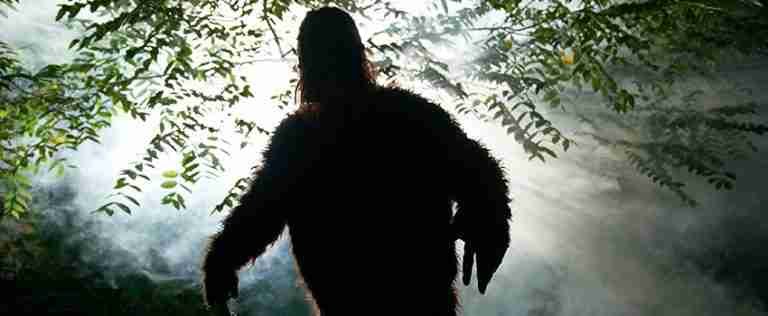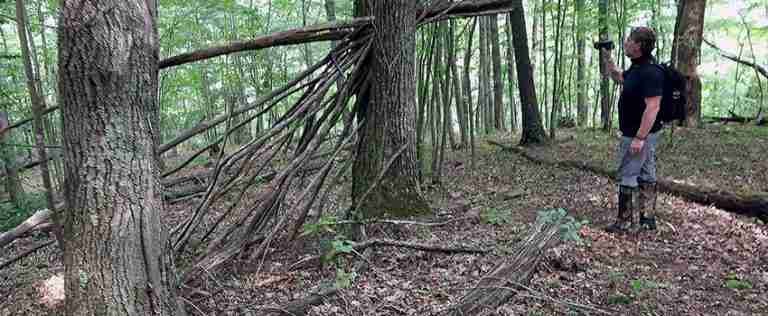In Search of Sasquatch: The Ongoing Debate About the Existence of Bigfoot

Bigfoot, also known as the Sasquatch, is a creature that has captured the imagination of people for decades. Despite numerous reported sightings of the creature, the existence of Bigfoot remains a matter of debate. Some people believe that Bigfoot is real and that there is evidence to support its existence, while others view the legend of the creature as purely fictional.
The purpose of this article is to examine the controversy surrounding Bigfoot sightings and to debunk common myths and misconceptions about the creature. We will explore the various theories about the existence of Bigfoot and the ongoing debate about the authenticity of sightings and evidence. We will also examine the challenges of conducting research into the creature, including the lack of concrete evidence and the difficulty of studying an unknown species.
In addition, we will debunk common myths and misconceptions about Bigfoot that have been circulated over the years. We will explore the lack of scientific evidence to support these myths and the importance of using scientific method to investigate claims about the creature. We will also examine the various forms of physical evidence that have been collected over the years, such as hair samples and footprints, and discuss the limitations of relying on physical evidence.
Finally, we will discuss the potential for future research into Bigfoot and the possibility of new discoveries in the field. We will also explore the ongoing debate about the existence of the creature and the potential for resolving the mystery in the future.
The Bigfoot Sightings Controversy
The Bigfoot sightings controversy is a long-standing debate about the existence of the Sasquatch, a mysterious creature that has been reported in various parts of the world for centuries. Some people believe that Bigfoot is a real, undiscovered species of animal, while others view the legend of the creature as purely fictional.
There are various theories about the existence of Bigfoot and the origins of the creature. Some people believe that Bigfoot is a missing link, a primate that evolved separately from humans and other known primates. Others believe that Bigfoot is a reincarnated spirit or an alien being that has visited earth. There is, however, a lack of scientific evidence to support these theories and the idea that Bigfoot is a real, physical creature remains controversial.
Conducting research into the existence of Bigfoot is a challenging task due to the lack of concrete evidence and the difficulty of studying an unknown species. Despite numerous reported sightings of the creature over the years, there is still no definitive proof that Bigfoot exists. Some people have claimed to have collected physical evidence of the creature, such as hair samples and footprints, but these claims have often been met with skepticism and have not been widely accepted by the scientific community.
The controversy surrounding Bigfoot sightings is likely to continue as long as there is a lack of concrete evidence to support the existence of the creature. Until there is more definitive proof, the debate about the authenticity of Bigfoot sightings and the existence of the creature is likely to continue.
Debunking Common Myths And Misconceptions About Bigfoot
There are many myths and misconceptions about Bigfoot that have been circulated over the years. Some people believe that Bigfoot is a missing link, a primate that evolved separately from humans and other known primates. This theory is based on the idea that there are gaps in the evolutionary record and that Bigfoot could be an undiscovered species that fills these gaps. However, there is a lack of scientific evidence to support this theory and the idea that Bigfoot is a missing link remains controversial.
Another myth about Bigfoot is that the creature is a reincarnated spirit or an alien being that has visited earth. This theory is based on the idea that Bigfoot is a supernatural being that cannot be explained by known scientific principles. There is, however, a lack of scientific evidence to support this theory and the idea that Bigfoot is a reincarnated spirit or an alien being remains purely speculative.
It is important to use scientific method to investigate claims about the existence of Bigfoot and to evaluate the authenticity of evidence that has been collected. Using scientific method helps to determine the validity of claims and to separate fact from fiction. Without scientific evidence, it is impossible to determine the authenticity of claims about Bigfoot and to determine the truth about the creature’s existence.
In order to debunk common myths and misconceptions about Bigfoot, it is important to use scientific method to investigate claims and to evaluate the authenticity of evidence. This approach helps to separate fact from fiction and to determine the truth about the creature’s existence.
Examining Physical Evidence Of Bigfoot
There have been numerous reported sightings of Bigfoot over the years, and some people have claimed to have collected physical evidence of the creature, such as hair samples and footprints. These forms of evidence are often used to support claims about the existence of Bigfoot and to try to prove the authenticity of sightings.
However, there are limitations to relying on physical evidence to prove the existence of Bigfoot. Physical evidence can be difficult to interpret and can be easily tampered with or fabricated. In order to determine the authenticity of physical evidence, it is important to use scientific method to examine the evidence and to determine its validity.
One of the most common forms of physical evidence collected in Bigfoot research is hair samples. Some people have claimed to have collected hair samples from Bigfoot, and these samples have been analyzed in an attempt to determine the identity of the creature. However, the limitations of relying on hair samples to prove the existence of Bigfoot include the fact that hair samples can be easily contaminated or misidentified, and there is a lack of scientific data on the characteristics of Bigfoot hair.
Footprints are another common form of physical evidence collected in Bigfoot research. Some people have claimed to have found footprints that they believe were made by Bigfoot, and these footprints have been analyzed in an attempt to determine the identity of the creature. However, the limitations of relying on footprints to prove the existence of Bigfoot include the fact that footprints can be easily faked or misidentified, and there is a lack of scientific data on the characteristics of Bigfoot footprints.
In order to determine the authenticity of physical evidence collected in Bigfoot research, it is important to use scientific method to examine the evidence and to determine its validity. This approach helps to separate fact from fiction and to determine the truth about the creature’s existence.
The Future Of Bigfoot Research
The debate about the existence of Bigfoot has been ongoing for many years, and there are many theories about the creature’s identity and origins. Some people believe that Bigfoot is a real, undiscovered species, while others think that the creature is a myth or a hoax. Despite the ongoing debate, many people continue to search for evidence of the creature and to try to prove its existence.
There is potential for future research into Bigfoot and the possibility of new discoveries in the field. With advances in technology and scientific methods, it may be possible to examine physical evidence more thoroughly and to gather new evidence about the creature’s existence.
However, there are also many challenges to conducting research into Bigfoot. The creature is largely unknown and there is a lack of concrete evidence to support its existence. In order to determine the truth about the creature’s existence, it is important to use scientific method to evaluate evidence and to determine its validity.
There is no way to predict the future of Bigfoot research and whether or not the mystery of the creature’s existence will ever be resolved. However, the ongoing debate about Bigfoot and the potential for new discoveries in the field make it an interesting and fascinating topic of research. So, the future of Bigfoot research remains uncertain and it is up to scientists and researchers to continue to search for evidence and to try to determine the truth about the creature’s existence.
Conclusion: In Search of Sasquatch: The Ongoing Debate About the Existence of Bigfoot
Bigfoot, also known as Sasquatch, is a mysterious creature that has captured the imagination of people for decades. Despite numerous reported sightings of the creature and some physical evidence that has been collected, there is ongoing debate about the existence of Bigfoot. Some people believe that the creature is a real, undiscovered species, while others think that it is a myth or a hoax.
In order to determine the truth about the creature’s existence, it is important to use scientific method to evaluate evidence and to determine its validity. There are many challenges to conducting research into Bigfoot, including the lack of concrete evidence and the difficulty of studying an unknown species. However, there is potential for future research into the creature and the possibility of new discoveries in the field.
The future of Bigfoot research remains uncertain and it is up to scientists and researchers to continue to search for evidence and to try to determine the truth about the creature’s existence. Whether or not the mystery of Bigfoot will ever be fully resolved remains to be seen, but it is an interesting and fascinating topic of research that continues to capture the imagination of people all over the world.






